overview
This session will focus on how spatial design can act as a communicative tools, building from techniques of level design, environmental storytelling and emergent narratives. We will examine how physical structures, objects, negative space, scale and lighting can express both emotions and histories.
summary
- intro
- intro
- final projects
- final projects
- homework review
- homework review
- prelude
- prelude
- spaces and places
- spaces and places
- scenography
- scenography
- environmental storytelling
- environmental storytelling
- outro
- outro
intro
environmental storytelling
welcome!
plan for the day
how can we tell stories just though spaces?
-> final projects
-> homework review
-> images of cities
-> scenography
-> environmental storytelling
final projects
groups and process
session 1:
- jesse (frost?) - asteroid and propaganda
- yuchen & shaun - bubble wasteland
- yutian danni - end of world
- lu & shu - cat perspective on tech city
- amanda & hiren - disaster tourism project
- marco - blooming world
session 2:
- sammy beth vince: instagram museum & marketplace
- jack and paul: positive version of the metaverse
2 minute updates at every class (what you did and what you plan to do)
homework review
assets in unity
what kind of assets did you choose?
how did you decide to lay them out?
prelude
google maps stories
pick a random google map location
- what are the main features of that space? what stands out?
200 years in the future, imagine the kinds of stories that this location supports:
social: something crucial in a group of people's lives happened here
economical: some of the elements you can see are representing the way to make resources. which ones?
ecological: what is the place of nature in the world, as you see it? what is the place of human dwellings?
...
describe what new elements could be added/built in order to highlight this story.
The point in this prelude is to stimulate the imagination of "what could have been", to try to see the invisible.
Seeing the invisible through the visible is also assigning meaning to the objects (symbols) that we perceive in a particular place, at a particular moment. What do those objects refer to? and can we all see them in a way, through a particular frame of reference.
results
Elements could include:
- single objects
- landscapes
- people
- buildings
Stories could happen:
- in the long-term
- in the short-term
- within a community (endemic)
- outside a community (epidemic)
spaces and places
image of a space
there is a difference between a space and its image.

The image itself is a representation of the space, something that is projected on a different level (a meta level), and which is constituted of feelings, perceptions and imaginations.
There is a difference between what exists physically and what exists psychologically, what exists in our heads. In the field of urbanism, a seminal study of such an effect was Kevin Lynch's The Image Of The City.
In his book, he attempted to identify the particular psychological features of a city, distinct—but not separate—from its physical features. Once these have been identified, the question is whether or not we can design and build physical features which can elicit psychological reactions.
imagined spaces
the psycho-spatial features he identified consist of:
- paths
- edges
- districts
- nodes
- landmarks
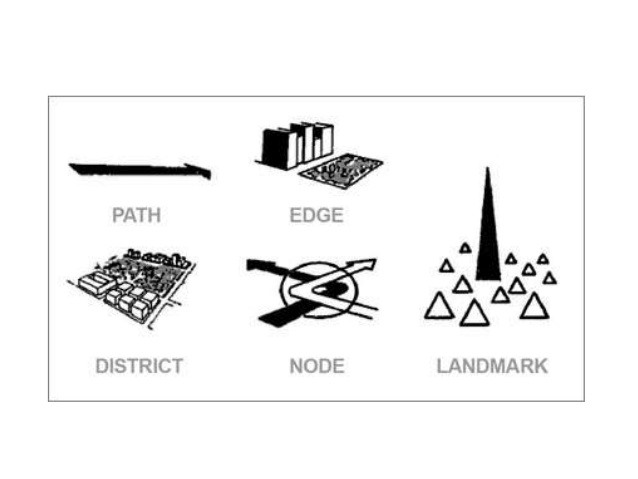
what are some of those in the cities you know?
Paths
- These are the streets, sidewalks, trails, canals, railroads, and other channels in which people travel
- They arrange space and movement between space
Edges
- Boundaries
- They can be either Real or Perceived
- These are walls, buildings, and shorelines, curbstone, streets, overpasses, etc.
Districts
- Medium to large areas that are two-dimensional
- An individual enters into and out of these areas
- Have common identifying characteristics
Nodes
- Large areas you can enter, serve as the foci of the city, neighborhood, district, etc.
- Offers the person in them multiple perspectives of the other core elements
- "...the most successful node seemed both to be unique in some way and at the same time to intensify some surrounding characteristic"[1]:77
Landmarks
- Points of reference person cannot enter into
- These are buildings, signs, stores, mountains, public art
- At least one aspect of them is unique or memorable in the context they exist
- Mobile Points (such as Sun) can be used as well
Taken from the wikipedia article.
landmark: pearl tower -> shanghai center tower (size, economic, tech development, wealth increase)
psu landmark: human preacher that is part of penn state, around which a community is created
zhengzhou university: on a global campus
gandhi ashram: socio-historical components
in your worlds
exercise
think about the world you'd like to develop
take 10 minutes and identify some paths, edges, landmarks, nodes and districts.
- what is the most important spatial feature?
- how does the visitor move around?
- what are the main nodes/what do they do there?
- ...
environmental psychology
if place affects the brain, our representations and our emotions...
can we build spaces that make us feel in a particular way?
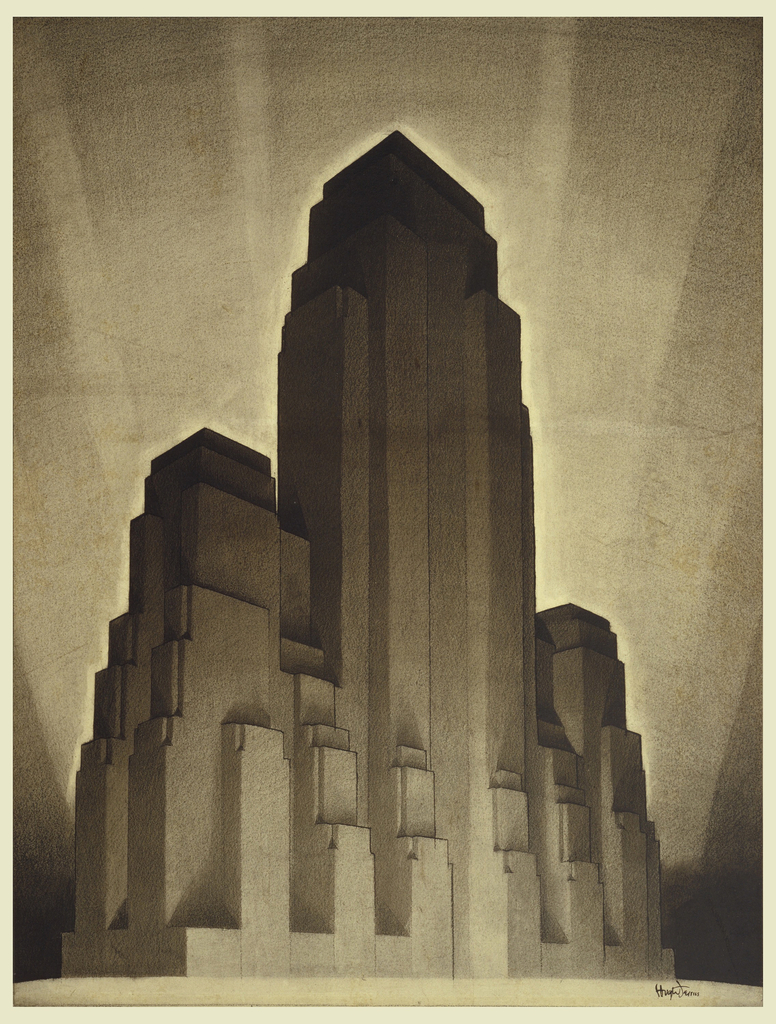
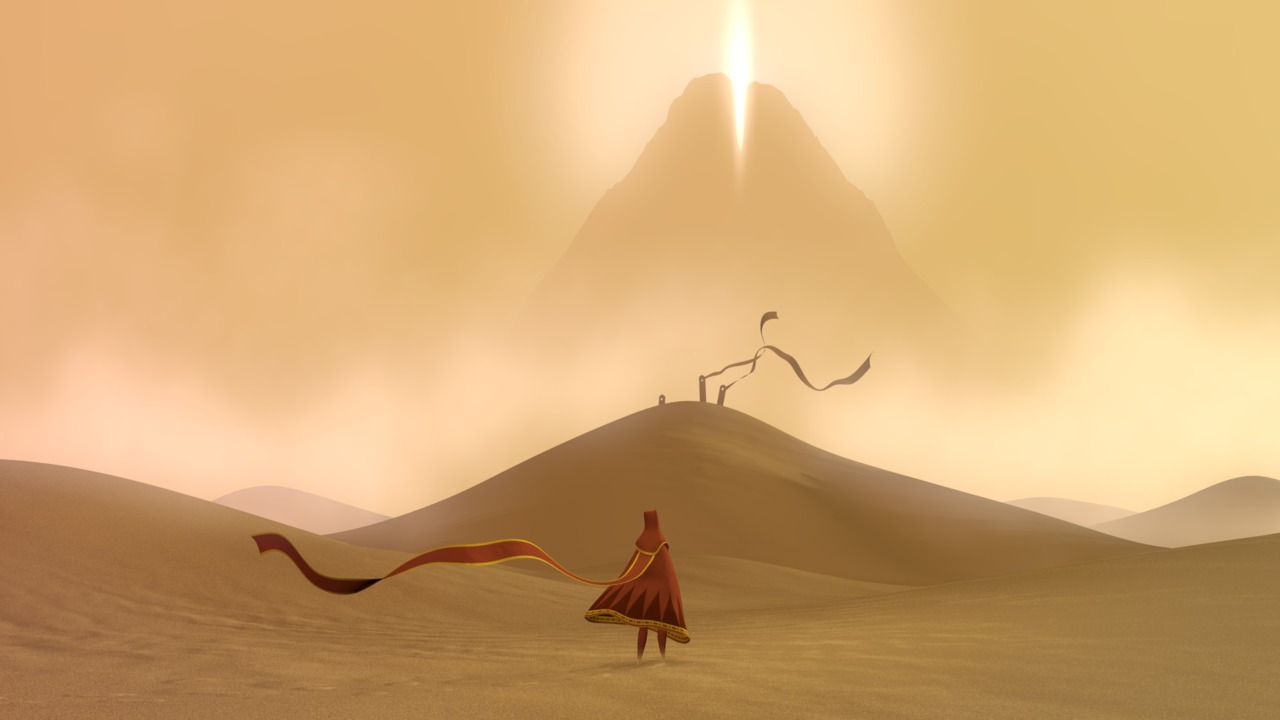
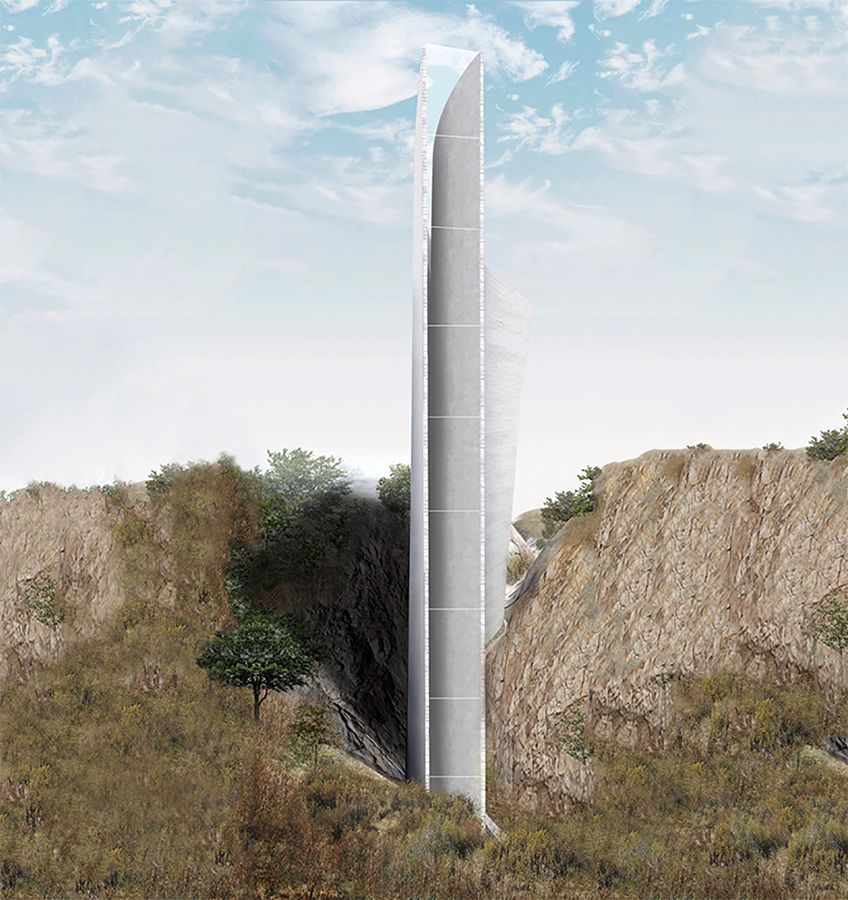
The first drawing is taken from the Cooper Hewitt archive, and evokes gravitas, seriousness, heaviness.
The second is taken from the video game Journey, and evokes myth, distance, reverence, religion.
scenography
from macro to micro
scenography, or the art of designing a stage, moves us from open-ended spaces to close-ended spaces.
all the world's a stage...
If we control the appearance of the stage, then we control the appearance of the world, then we also possibly have an impact, through the environment, on the public's feelings. We can further persuade them of the validity of what we're presenting, reinforcing their suspension of disbelief.
scenography in theater
in theater, we moved from realistic sets (building fake trees, fake castles, fake balconies) to atmospheric sets (evoking moods and emotions).
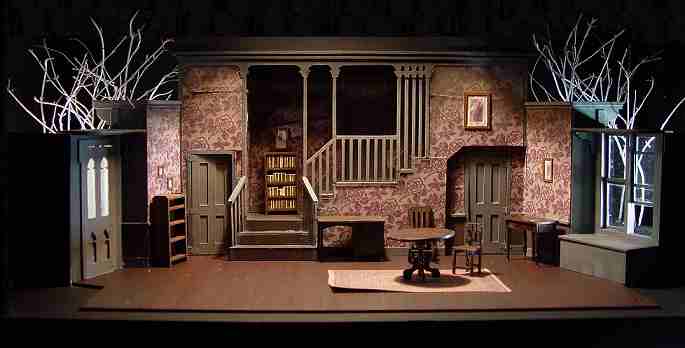

adolphe appia
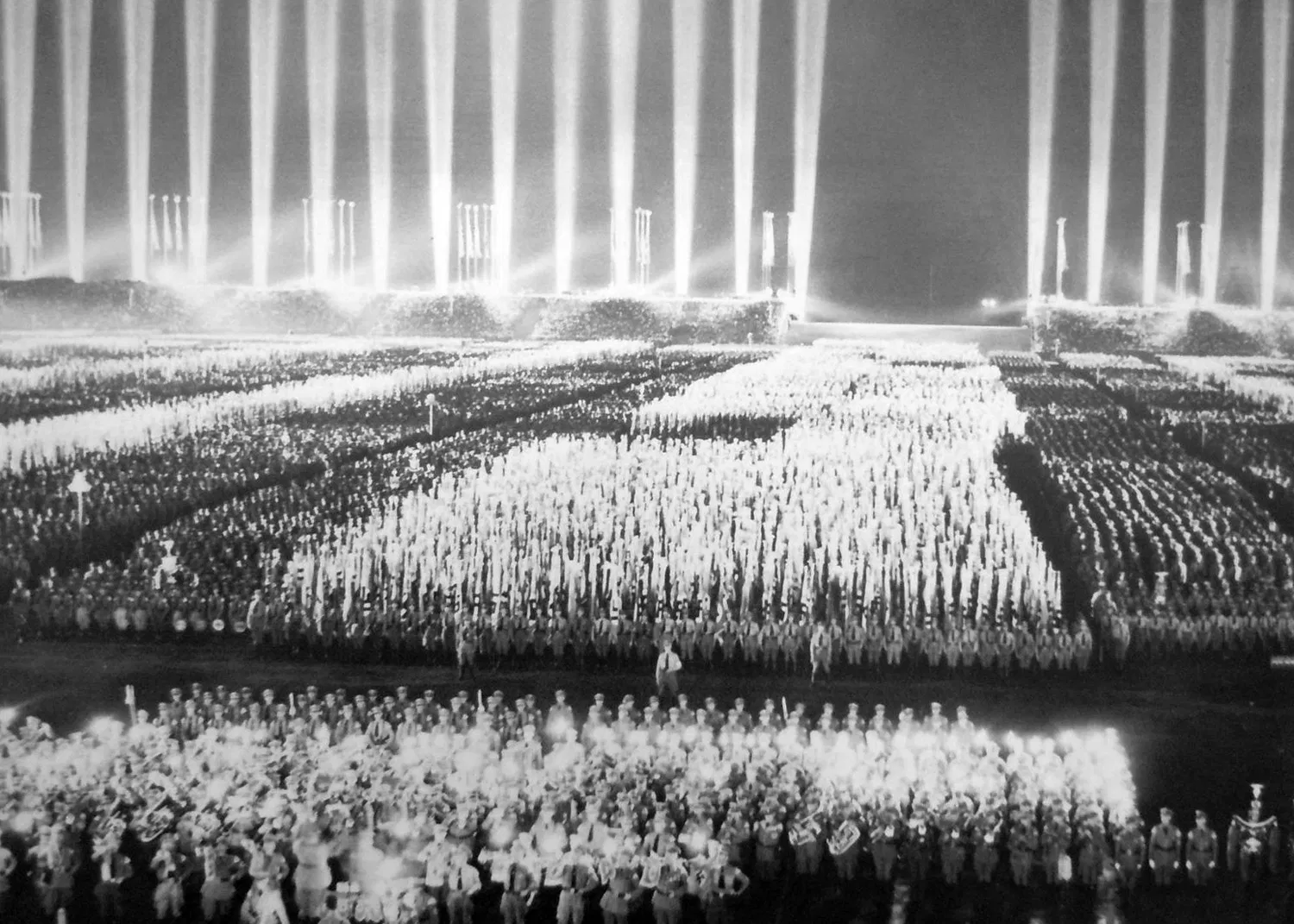
The above example is a set design by Adolphe Appia, a stage designer and architect from the early 20th century which influenced a new direction in architecture, particularly by taking into account the role of light into stage design and spatiality.
What we see is the dual emphasis on the background, huge pillars of light, and the foreground, with a small lit cave. Each induce different feelings, and are created through the use of light.
scenography in museums
space also has a relationship with the objects that are within it, particularly inside museums
- reflective space
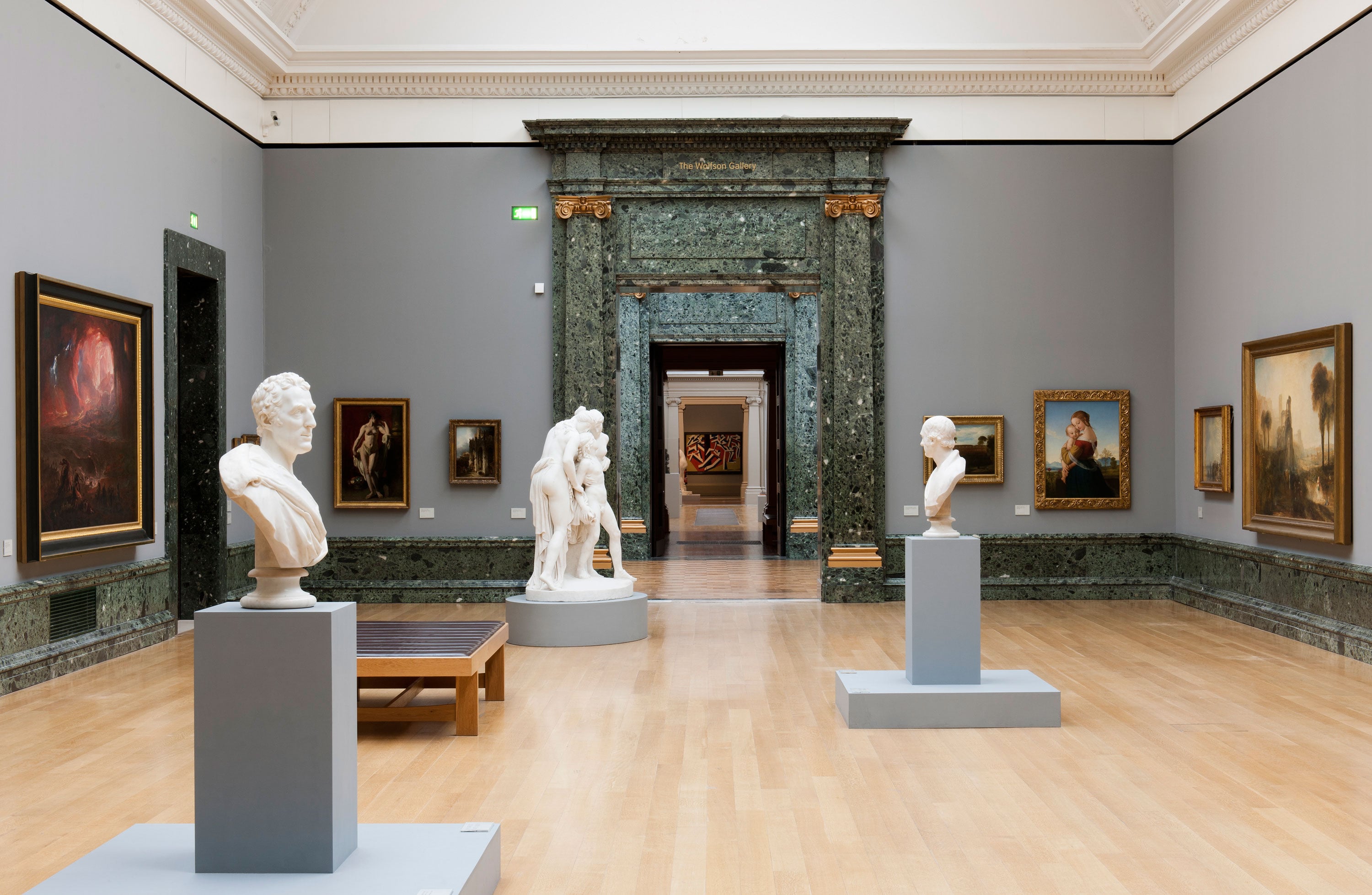
- descriptive space
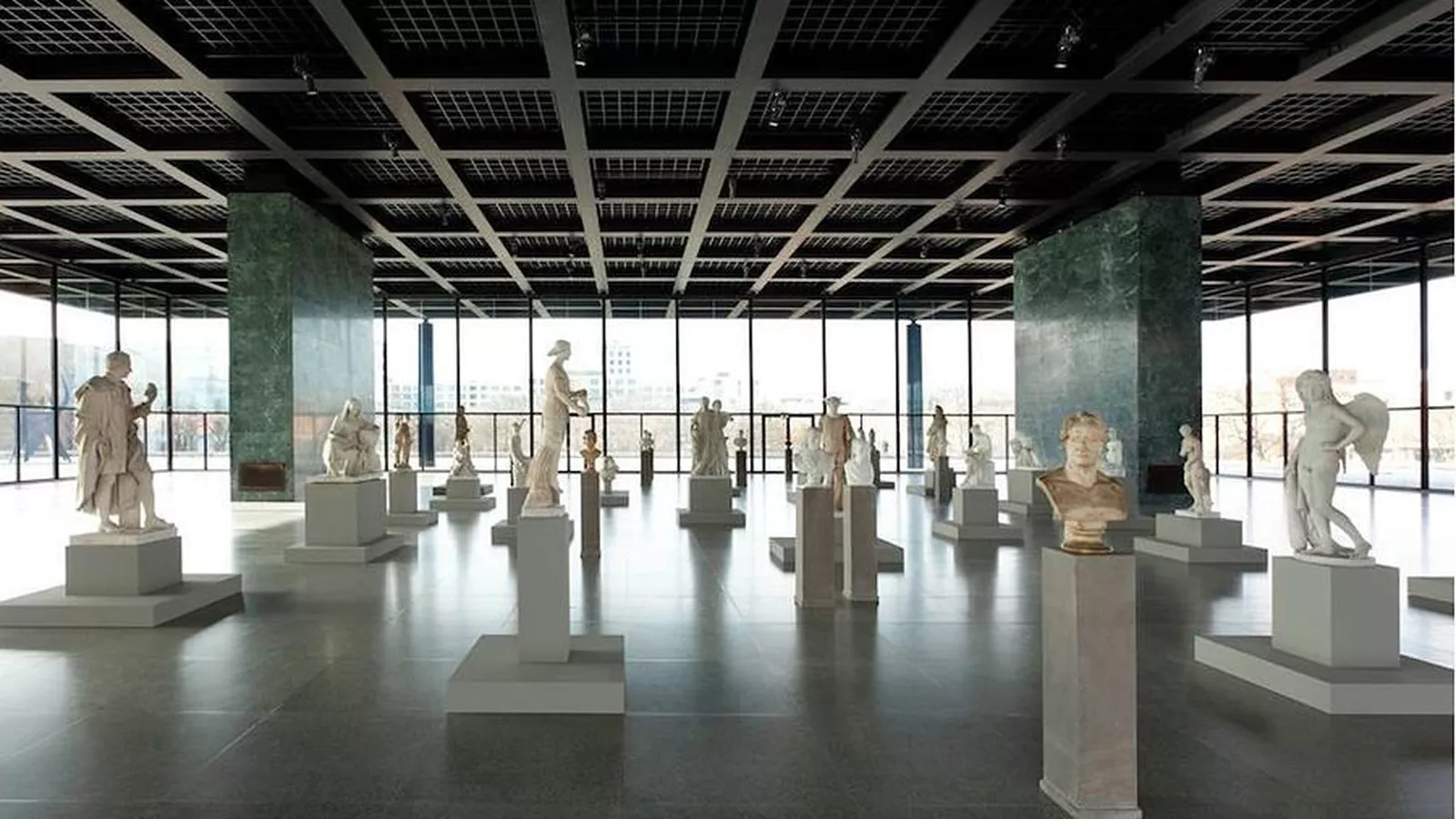
- authoritative spaces
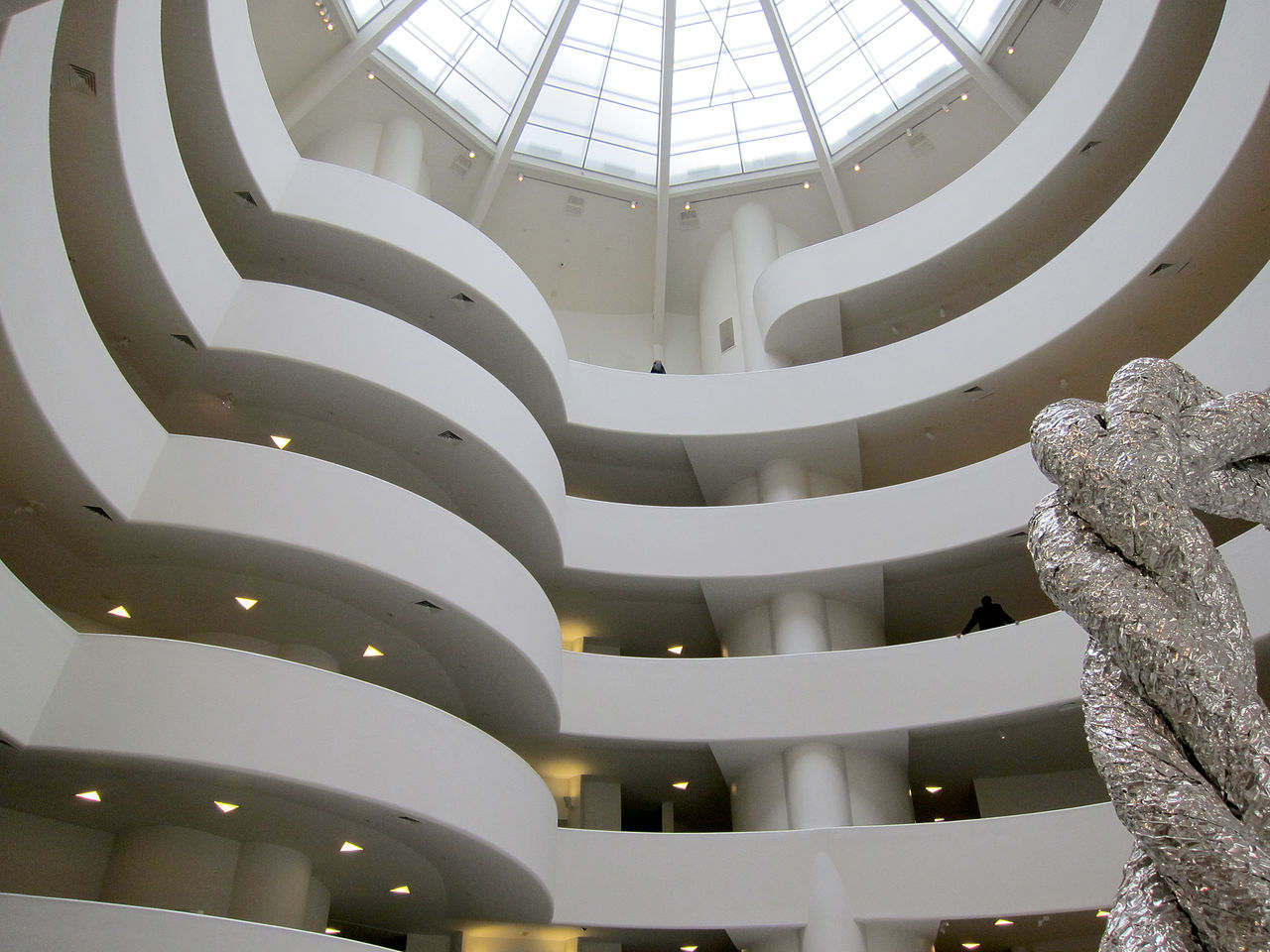
The first type of space that muesums exhibit are reflective spaces, in which the physical building reinforces the paradigm under which the museum operates; space first, object second. In this case, what we see is the spatial translation of the linear development of time in art history, the grouping of formally similar artists together, and the separation by geographical boundaries.
The first picture here is from the Tate Gallery in London, and the perspective offered to you here hints at a "pearl necklace" layout, in which each small room is connected to the others by a single pathway in, and a single pathway out. The flow of the public is therefore heavily constrained, and implies a strict order in which to approach the collection.
As a counterpoint to linear space, descriptive space is a space in which the objects of display are laid out such that they can be approached from different perspectives, and in different orders, such as in the second picture, Mies Van Der Rohe's Neues National Galerie in Berlin.
The itinirerary of the visitor is in this case a little less pre-determined, and the appreciation of the objects can be made on the visitor's own terms. However, studies have shown that such a descriptive approach has led to visitors spending less time per object, but viewing more objects altogether when compared with visits within reflective spaces.
scenography and objects
objects are latent stories, which can be activated through:
proof: objects laid out dramatically -> the space as a background for the object
interaction: place-making with histories ("oh, this is where X happened") -> integrating the object into the space
collection: gestalt sense-making -> the whole is greater than the sum of its parts
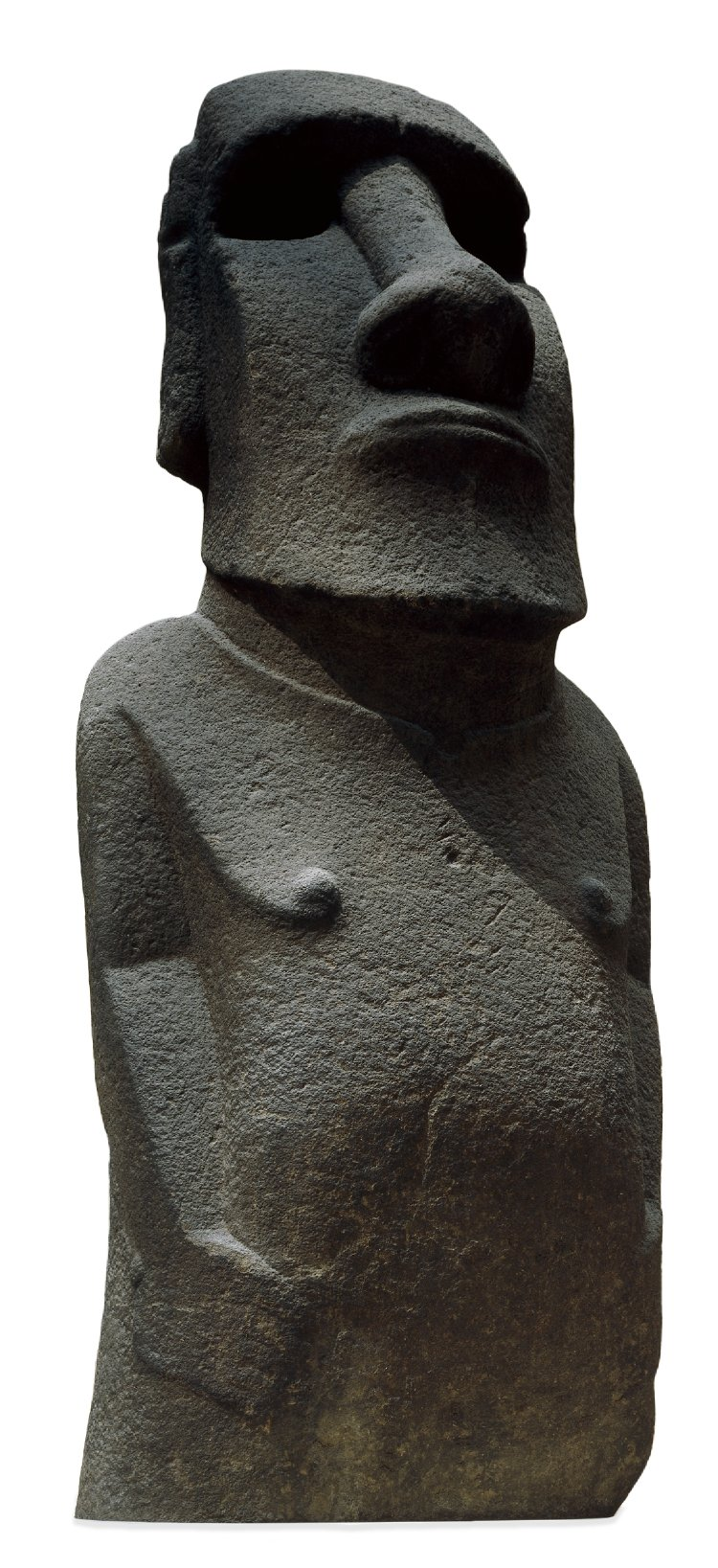
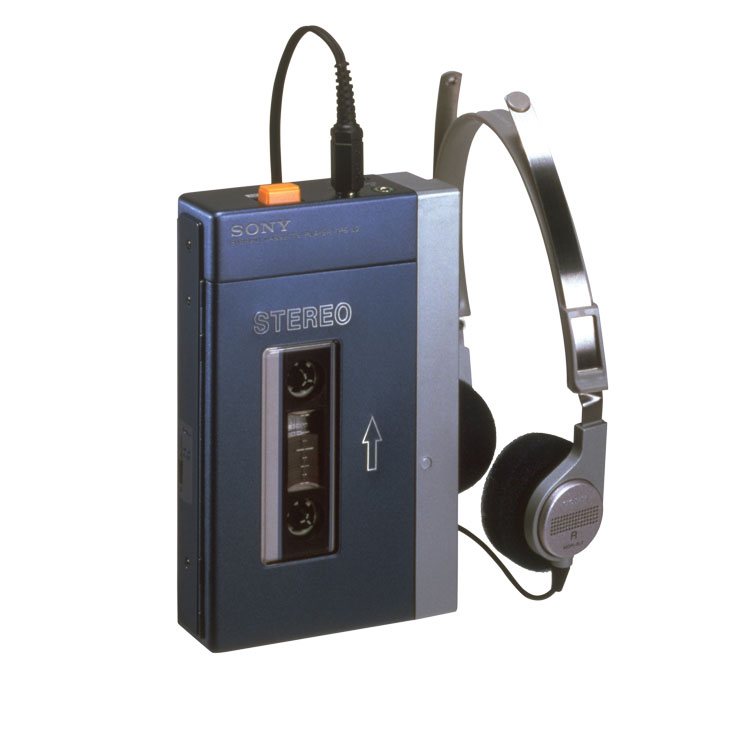
environmental storytelling
scenography in the digital
in the digital realm, we have almost no physical or structural constraints.
the only constraints we have is our public's capacity to adapt.
particularly, we can simulate the open-ended within the close-ended.
Digital scenography is also called level design, or web design. We layout spaces specifically for a particular use or feeling, in order to condense the multiplicity of stimulus in real-life to a single direction or concept.
Level design elements include:
- urban planning (as seen with lynch)
- naturai planning (deciding what the flora, fauna, weather and natural lighting conditions will be in given spaces)
- abilities for users to do things in particular places of the game level, including other characters and interactions
- any formal details such as music, sound effects, textures and animations
architectural storytelling in video games
open world
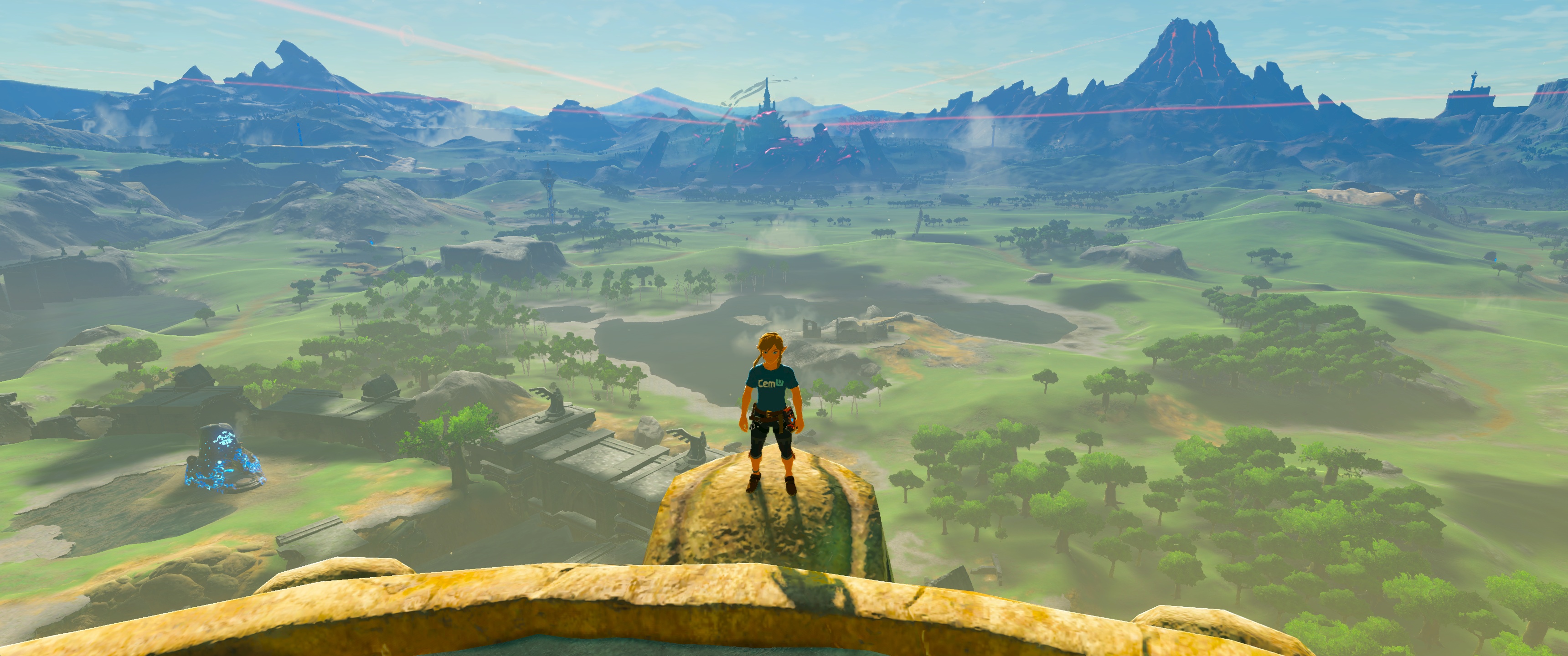
on-rails
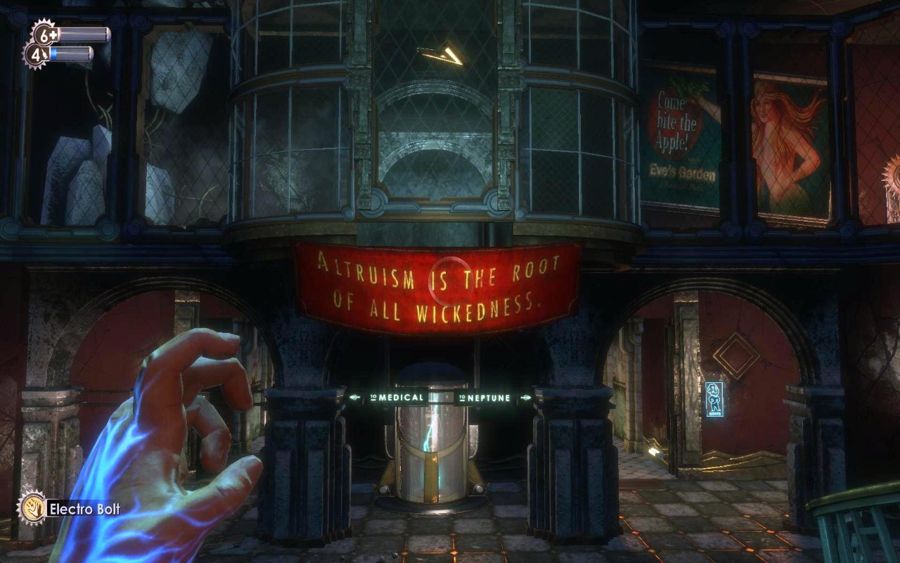
cave-like

environmental storytelling:
- can evoke pre-existing narratives
- provide a stage for narrative events
- may embed narrative information
- provide resources for emergent narratives
open world (the legend of zelda: breath of the wild, nintendo, 2019) is an approach in which the whole world is accessible at once, allowing the player to explore on their own and create their own intrinsic meaning and stories. By activating the spaces into places, they create their own mental map of the place.
on rails (bioshock, 2k, 2007) allows the designer to communicate to the player specific, cinematic scenes which are loaded with meaning at once. This focuses on the interpretative power of the player to understand the conceptual undertones and the unspoken stories of the world.
cave-like (howling dogs, porpentine, 2012) is a radical (and old) way of relying exclusively on the player's imagination to create spaces through textual suggestions and highly abstracted interactions (e.g. clicking, typing), often resulting in fantastical spatial constructions.
Environmental storytelling creates the preconditions for an immersive narrative experience in at least one of four ways:
- spatial stories can evoke pre-existing narrative associations
- they can provide a staging ground where narrative events are enacted
- they may embed narrative information within their mise-en-scene
- they provide resources for emergent narratives.
architecture in digital worlds
software has its own spatial elements (hyperlinks, scrolls, drags, etc.) and its own psychological images (desktop metaphor vs. icon metaphor)

choosing your approach
spaces have a psychological impact, they can induce emotions and associations.
there is trade-off between imagination and persuasion along the gradient between open-ended and close-ended
outro
conclusion
-> spaces contain mental images, and evoke both function and emotion
-> spaces can have something to say, imposing them on the visitor, or letting them create their own stories, turning them into places.
-> digital architectures can be almost infinitely rich, and as such imply some tradeoffs.
homework
integrate narrative elements in your space by using UI elements
make some of them interactive (using, for instance, buttons, text fields or checkboxes)